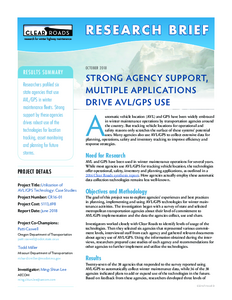Snow Removal at Extreme Temperatures
Date Created
2013-03
Report Number
CR11-04
Description
Weather Event Reconstruction and Analysis Tool
Date Created
2020-01
Report Number
CR16-05
Description
Emergency Operations Methodology for Extreme Winter Storm Events
Creator
Date Created
2018-05
Report Number
CR16-04
Description
AWSSI Enhancements in Support of Winter Road Maintenance
Date Created
2019-02
Report Number
CR16-02
Description










